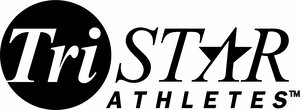Athletes of all levels who have ever worked towards a specific training goal have seen the powerful benefits of exercise and its impact on leaning out and weight loss. This positive aspect of endurance sports becomes far more challenging to maintain when we limit or stop training.
Our coaches help our athletes with three major concepts when it comes to food demands;
Being able to change training load up and down
Training to eat vs eating to train
Systematic food timing
Being able to change training load up and down
When you are preparing for an event, it makes sense to increase training stress and load to gain fitness. When its time to rest, you must rest in order to repair. The importance of being able to transition between these peaks and valleys is so that the body can recover from harder bouts of training from a macro perspective as well as micro level. When this rest period includes hyperactivity in order to burn calories to create a weight loss deficit, the result can lead to burnout and poor eating habits.
Systematic scheduling of training (ATP or annual training plan) with your coach will help you peak for an event and plan for the downtimes. During the early phases of ones season, the stimulus and training does change with lighter intensity/volume focus and the meal planning and nutrient timing should support this effort. When closing in on an “A” priority event, the total load and or intensity will also tilt upwards and once again the foods you eat will also have to pivot on demand.
Having the ability to increase and decrease the training stimulus is what allows the body to achieve greater levels of performance and health.
Training to eat vs eating to train
When you step out your door to train each day think, are you training for your next meal or next race? Many seasoned athletes learn how to “strap on the feed bag” and enjoy the benefits of a higher calorie diet, only to find that when they cut down on training time they gain weight or body fat when their diet does not change as well.
Some athletes may feel compelled to do longer bikes or runs in order to stay lean and keep a year round race weight and body composition. This is a mistake especially for ultra endurance athletes where longer distance training tends to break down the body and prevent the timing of future peaks.
Maintaining a high year round schedule of training is reserved for a select few elite and professional athletes. Know how much training you should be doing now by planning it with your coach so that you are in top fighting form on the day and months you need it most. It is important to learn how to dissociate the compulsion to train to eat and rather learn how to select and time foods more appropriately.
Systematic food timing
Whatever your body composition goals are, timing the macro nutrients will allow you to maintain a healthy body composition and weight thoughtout most of the year. While it is in fact “normal” to see higher body fat percentages when not in peak form, it is possible to stay quite lean year round.
When you eat carbohydrates it can impact total insulin levels and dictate fat storage or carbohydrate burning. Which sessions to reach for fast acting carbohydrates (Juice, fruits, or performance gel etc) or slower burning carbohydrate fuel sources (Brown rice, brown breads) depends on your training intensity and load in your training plan. Having specific coaching oversight and guidance on when and what to eat can unlock performance as well as body composition and weight goals.
Fats, loved/hated but never ignored we say! Currently, high fat diets are in fashion for endurance athletes and non, however, the application of how much and when to eat them is often done incorrectly. No one wins on a high fat and high carbohydrate diet and when training is intense, carbohydrates take front and center and fat should drop to the background on a percentage basis.
When training demand is low, fat comes back into the picture on a percentage basis with some limitations due to the high caloric density of fat grams. Fats contain nearly twice as many calories per gram vs carbohydrates and proteins. …And proteins? They are essential to athletes and non and help keep you satiated while not “blowing out the calorie budget” due to their limited four calories per gram impact. Most of the meal planning our coaches and dietitians do for our athletes emphasize a higher protein budget on a day to day basis.
Takeaways; 1. Training is dynamic and you must be able to ramp training up and down throughout the year. 2. Dont train to eat, eat to train, 3. Have a game plan with your food with how you will consume your macro nutrients.
Get started with your training and nutrition plan, learn more below.











Sign ups and payments for all Tristar Athletes training and race camps. Spring Oceanside/Virtual camp 4.01-4.04.22 and Lake Placid local / Virtual camp 7.22-7.25.22